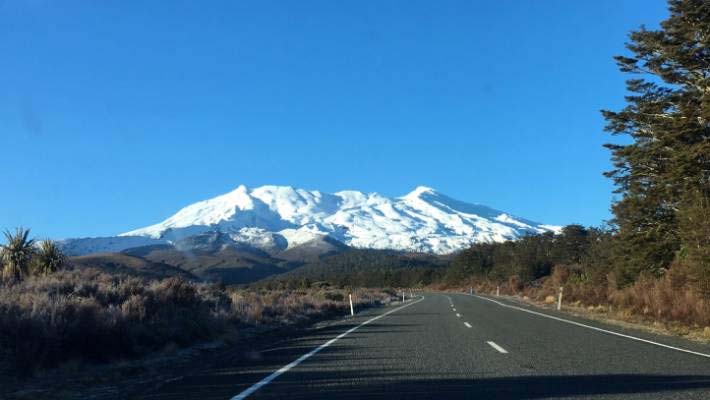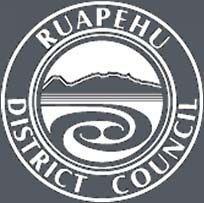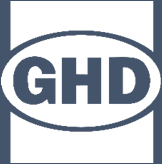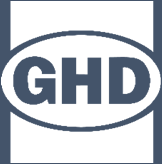





 Ruapehu
Ruapehu Transport
System Design
Post workshop notes | 11 October 2019
Workshop Objective
The aim of the workshop was to produce an initial coordinated implementation program of works for 2020 and for the
following three year planning cycle of government.
The scope of the programme development at this stage was limited to Transport Demand Management, existing
infrastructure improvement and resources in preparation for business planning cycles NZTA, RAL, DoC, Regional and
Local Govt.
The target outcome for the workshop was:
1. A draft short term implementation plan document that enables accountability for coordination of resources across
multiple agencies that contribute to transport solutions in Ruapehu
2. Revision of knowledge gap analysis to inform medium and longer term elements
3. Agree pathway forward
This post workshop summary outlines activity carried out during the workshop and provides initial programme thinking.

• Funding constraints
• Lack of transport choice
• Peak period congestion
• Road safety
• Visitation capacity
• Infrastructure pressure at peak times
Key issues from
• Lack of cohesive and synchronised
ViaStrada report
visitor information
• Overlapping jurisdictional boundaries

•
High volumes of Tongariro National Park visitors on
peak days at key destinations is resulting in deteriorating
visitor experience and a reduction in repeat visitors impacting
long term sustainability of the region.
•
Increasing traffic volumes of freight, unfamiliar drivers
Public
and current “Level of Service” of the road network is resulting in
increasing safety issues and probability of serious crashes.
transport •
Increasedopportunity to significantly improve the
economic
problem
and social prosperity of the community and region.
definition from
•
Improved co-ordination of operations by / and
the strategic case
between operators and partners has provided confidence
that regional improvements can be achieved through a co-
ordinated and ‘do more with less’ approach at a larger scale.
Transport system design principles
Plan for uncertainty in the future:
Think network:
Anticipate a wider range of extreme circumstances
Integration of different transport modes, land
e.g. climate change impacts on ski season or
use and activities, means thinking needs to be
Flexible governance and operating
walking tracks.
network based.
systems:
Flexible approach to the planning and design of
Design systems that are Robust,
transport systems requires an integrated
Personalise:
Repairable, Resilient, and Responsive:
approach to succeed.
Consider the end user and their interaction.
Critical infrastructure should consider these
principles, as well as the wider system – ‘the
weakest link’.
Adapted from CityLab
 A key consideration is the variety of users within the Ruapehu
District with varying needs. Different actions and
considerations in the design and function of a transport
system is required to meet these different needs.
Some of the users for example, are as follows:
A key consideration is the variety of users within the Ruapehu
District with varying needs. Different actions and
considerations in the design and function of a transport
system is required to meet these different needs.
Some of the users for example, are as follows:
•
Active outdoor visitors
•
Non-English speaking tourists
•
“New” New Zealanders
•
Local employees
•
Couples travelling
•
Solo travellers
Users
•
Groups of friends on holiday
•
Families with young children
•
Transport operators
Transport outcomes sought
Participants reviewed previously identified outcomes developed in gap analysis workshop. These were reconfirmed as
still being valid and were further considered in the development of each groups draft programme.
•
Parking is managed well
•
More opportunities for iwi
•
Transport system management is driven by safety
•
Cumulative development effects are managed
•
Transport infrastructure and services are provided
•
A vehicle fleet that is high quality
at an efficient level
•
Visitor experience of transport is seamless and positive
•
Culture is respected and communicated to visitors
•
Positive and safe user behaviour is promoted
•
Internal conflicts within and between partners and
•
A synchronised visitor information platform
stakeholders are resolved
•
Roads are consistently maintained to a high but
•
Stakeholders understand one another
affordable standard (ONRC)
Infrastructure and non-infrastructure
interventions considered
During the workshop participants had time to discuss different interventions which could be considered in relation to the
transport system to respond to the knowledge gap analysis. After being presented with an initial range to start with, the
group developed a few more. The interventions considered were as follows:
• Communications Plan
• Gondola to Whakapapa Village
• Central Visitor Information Portal
• Day visitor facilities
• Walking trail monitoring
• Visitor Information
• TAC Visitor Hub
• Wayfinding
• Multi-agency board
• TAC Pass
• Turangi Park n Ride
• Local parking
• Central Visitor Hub
• Taupō – Turangi TOD
• Public transport system
• Fleet standards
• Parking Management Plan
• Management structure, RCAs,
coordination, NZTA boundary
• Network Traffic Counters
• Road Pricing
• Transport certainty
• Mountain Parking Pricing
• Parking occupancy monitoring
• Cultural Centre
• NP Transport Pass
• Ski/Bike/Hike Trains
Group programmes
Following the discussion, participants were sorted into groups to further think through
and develop a three year plan for the interventions discussed, along with some of the
related risks, challenges and opportunities associated with these interventions.
The outputs of the four working groups are outlined over the next few slides. Note
outputs vary depending on the specific focus of each group.
From these a draft initial programme has been compiled and is presented for
consideration.
•
Communication Strategy: VMS, car
counters, wayfinding app
•
Parking Strategy: Levies, Park n Ride
Hubs, bookable parking
•
Tongariro Alpine Crossing Pass:
Group 1
Transferable
•
Fleet standards: Alpine Code
programme
•
Network traffic counters: Data to make
informed decisions
•
Signs: The extent of the park
Plan: Years 1- 3
• Parking management Plan
• Communications Plan
• Visitor information portal - VMS
Group 2
• Fleet standard
programme
• Public transport system
• Better agency cooperation
Plan: Years 1- 3
• Legislation including settlement
• TNP management plan
Group 2
• Lack of funding and resources
• Peak demand - Demand management
programme
• Economic viability
• Behaviour change
• Dual world heritage
Risks, challenges
and opportunities
Year 1
•
Demand pricing
•
Hypothecated pricing
•
Electric Vehicles
•
Differential pricing
Year 2
•
Parking strategy
Group 3
•
Area wide
programme
•
Public Transport
•
Memorandum of understanding
Year 3
Plan: Years 1- 3
•
One voice communication plan
•
Demand responsive
•
App
Year 1
•
Social disruption
•
Commercial disruption
Group 3
Year 2
programme
•
Consistency
•
Funding policy and mechanisms
•
Memorandum of understanding
•
Stagnation
Risks, challenges
Year 3
and opportunities
Year 1
•
Traffic counters
•
Parking management plan
•
Central visitor information portal
•
VMS
•
Parking occupancy monitoring
•
Walking trail monitoring
•
Communication Plan: Inbound operators as well as ones here
•
Governance Structure: To develop long term plan/vision etc.
Year 2
•
PT system
•
Fleet standards
Group 4
•
Parking strategy
•
Parking and occupancy pricing
programme
Year 3
•
Trains – long term
•
Central visitor hub
•
Culture centre
•
TAC Pass
Opportunities
•
Understand visitor profile
•
Parking pricing – more expensive closer to field
•
Ride share from hub
•
Updates as you get closer
•
Prioritise busses going up to keep the system moving
•
Long term vision still being developed
•
Customer experience management on peak days
Group 4
•
Pricing of skier days
•
Comms that go out live
programme
•
Being aware of broader implications for each decision and
coordination and relationships between different agencies
Risks
•
Need for absolute certainty
Risks, challenges
•
Long term vision still being developed
•
Being aware of broader implications for each decision and
and opportunities
coordination and relationships between different agencies
Draft programme for consideration
The following are the interventions considered to have commonality between the groups which
were highlighted within the group programmes. The next few slides will provide more information
about the contents and features of these interventions.
Year 1
Years 2-3
•
Parking strategy and management plan
•
Visitor information system (portal, app, signs)
•
Communications plan
•
TAC Pass
•
Stakeholder and agencies integrated approach
•
Fleet standards
•
Integrated Public Transport System
•
Network data collection
•
Central Visitor Hub and Cultural Centre
Parking Strategy
Develop strategy and approach to define the role of parking in a sustainable
transport system and set direction for the management and supply of parking:
•
Technology for Parking Management
•
Parking Management Plans
•
Consideration of dynamic, demand based, pricing
•
Park and Ride provision and pricing
•
Integration with Public Transport and Shuttle operators
Environmental and Social considerations
Aim to provide a level of equity for all users of the transport system and
Parking
emphasis on indirect and longer term impacts on the environment.
strategy and
Further Considerations
management
•
Legislative Requirements
•
Funding
plan
•
Hypothecation of revenue
•
Congestion / demand pricing
•
Risk Management and wider system dependencies
Approach to Parking Strategy
•
Analyse existing data
Quantify supply and demand, and understand consumer behaviour
•
Demand Forecast
Forecasting future demand, revenue and wider system dependencies
•
Strategy Development
Parking
Balancing objectives, constraints and prioritising interventions
•
Consultation
strategy and
Local decision making informing process and building consensus
•
Design
management
Detailed design of interventions to deliver strategic objectives
•
Delivery
planning
Implementation of strategy and detailed designs
continued
Communications Plan
A communication plan aims to provide an approach to providing
stakeholders with information. The plan formally defines who should
be given specific information, when, and how that information should
be delivered.
•
Understand and align partner organisation communications
•
Development of a communications plan in a collaborative manner
•
Combine knowledge and expertise
•
Includes both internal communication within partner and external
communication with stakeholders at a wider local, regional, and
national level
Communication
•
Defines and refers to the communication with external audiences
•
Establishes protocol for communication including communication
plan
tools such as meetings, social media, media, email lists etc.
Integrated approach
An integrated approach to planning and transport system design will
benefit all parties involved through providing greater clarity of future
planning and outcomes sought to enable greater efficiencies between
those involved.
Short-term: Memorandum of Understanding
Consider development of a memorandum of understanding (MoU) as
a formal agreement between parties to establish or recognise
partnerships.
Stakeholder and
•
Not necessarily legally binding but founded on mutual respect
•
Can be simple and take a short time to implement
agencies
•
Formally signals an intent to work collaboratively
integrated
Medium-term: Governance Structure
approach
Develop multi-party governance structure
Fleet standards and operations
Fleet operation is the core business for companies that operate a vehicle
fleet for hire or reward, such as taxi, shuttle and other passenger services,
truck and tow-truck operators and vehicle rental companies.
The Conservation Act 1987 requires that all operators using a conservation
area for gain or reward must have a concession.
In New Zealand all Passenger Service Vehicles must meet the requirements
under the Land Transport Rule: Passenger Service Vehicles (1999).
NZ Bus and Coach Association have also developed an Alpine Vehicle
Specification and Code of Practice, voluntarily adopted by some operators.
Short-term: Enforce alpine vehicle specification and code of practice as the
minimum standard for fleet operators within the National Park. Seasonal
variations need to be considered.
Fleet
standards
Longer-term: Develop broader minimum standards for vehicles operating
within the National Park e.g. electric vehicles.
Customer and Visitor Information Systems Plan:
Development of a customer information plan to determine approach
to providing a system for customer information. Consideration of:
•
App based (centralised) information platform
•
Variable Message Signs (VMS) for critical information at decision
points around the transport network
•
Integration / consideration of technology strategies
•
Integrated with development of communications plan
Visitor
•
Incident and event management
information
system
Next steps
Follow up workshop to agree draft programme and progress development of:
• Parking Strategy and Management Plan
• Communications Plan
• Stakeholder and Agencies Memorandum of Understanding
• Fleet operator standards
• Visitor information systems
www.ghd.com









